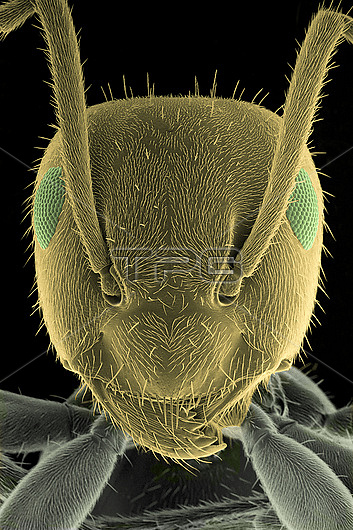
Scanning electron micrograph of the head of Lasius niger, the common black garden ant. The picture shows the scape (base) of two antennae, and two compound eyes (green), 1mm apart. The antennae are the more important sense organ; they can extend in front of the head, and their segmented tips (the funiculus, beyond picture top edge) can sense movement, judge size and detect some chemicals. Vision is less significant. Each compound eye of L. niger has 120 visual units (ommatidia); a dragonfly eye has 30000. Black garden ants are social animals that nest under paving stones, in rockeries and rotten stumps. The colonies are long lived unless disturbed; queens may survive for 15yrs or more. L. niger feeds on a variety of small insects, but can protect ("farm") colonies of aphids in order to gain honeydew. The best advice for gardeners is - tolerate them; they do more good than harm
| px | px | dpi | = | cm | x | cm | = | MB |
Details
Creative#:
TOP27147614
Source:
達志影像
Authorization Type:
RM
Release Information:
須由TPG 完整授權
Model Release:
N/A
Property Release:
N/A
Right to Privacy:
No
Same folder images:

 Loading
Loading